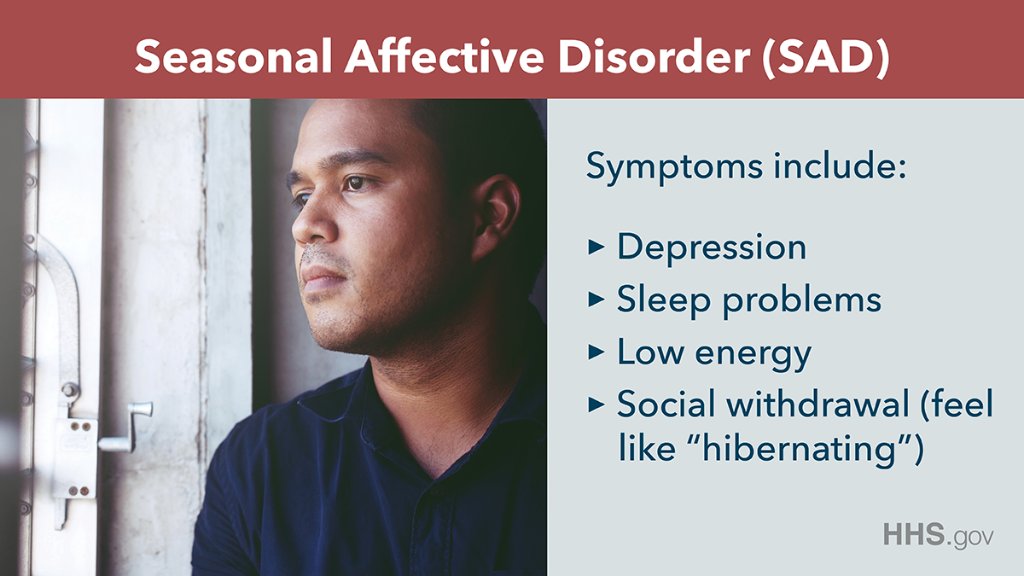WBIW.com News - local
Brought to you by WBIW News and Network Indiana
SAD - Seasonal Affective Disorder
Last updated on Wednesday, December 26, 2018
(UNDATED) - When the weather gets colder and there’s less sunlight, do you start to feel sad or sluggish?
You might have Seasonal Affective Disorder or SAD.

Learn about the signs and symptoms, risk factors, and what to ask your doctor.
Seasonal Affective Disorder (SAD) is a type of depression that comes and goes with the seasons, typically starting in the late fall and early winter and going away during the spring and summer. Depressive episodes linked to the summer can occur but are much less common than winter episodes of SAD.
Symptoms of the Winter Pattern of SAD include:
- Having low energy
- Hypersomnia
- Overeating
- Weight gain
- Craving for carbohydrates
- Social withdrawal (feel like "hibernating")
Symptoms of the less frequently occurring summer seasonal affective disorder include:
- Poor appetite with associated weight loss
- Insomnia
- Agitation
- Restlessness
- Anxiety
- Episodes of violent behavior
- Risk Factors
Attributes that may increase your risk of SAD include:
- Being female. SAD is diagnosed four times more often in women than men.
- Living far from the equator. SAD is more frequent in people who live far north or south of the equator. For example, 1 percent of those who live in Florida and 9 percent of those who live in New England or Alaska suffer from SAD.
- Family history. People with a family history of other types of depression are more likely to develop SAD than people who do not have a family history of depression.
- Having depression or bipolar disorder. The symptoms of depression may worsen with the seasons if you have one of these conditions (but SAD is diagnosed only if seasonal depressions are the most common).
- Younger Age. Younger adults have a higher risk of SAD than older adults. SAD has been reported even in children and teens.
The causes of SAD are unknown, but research has found some biological clues:
- People with SAD may have trouble regulating one of the key neurotransmitters involved in mood, serotonin. One study found that people with SAD have 5 percent more serotonin transporter protein in winter months than summer months. Higher serotonin transporter protein leaves less serotonin available at the synapse because the function of the transporter is to recycle neurotransmitter back into the pre-synaptic neuron.
- People with SAD may overproduce the hormone melatonin. Darkness increases production of melatonin, which regulates sleep. As winter days become shorter, melatonin production increases, leaving people with SAD to feel sleepier and more lethargic, often with delayed circadian rhythms.
- People with SAD also may produce less Vitamin D. Vitamin D is believed to play a role in serotonin activity. Vitamin D insufficiency may be associated with clinically significant depression symptoms.
There are four major types of treatment for SAD:
- Medication
- Light therapy
- Psychotherapy
- Vitamin D
These may be used alone or in combination.
1340 AM WBIW welcomes comments and suggestions by calling 812.277.1340 during normal business hours or by email at comments@wbiw.com
© Ad-Venture Media, Inc. All Rights Reserved.
Click here to go back to previous page

